Gateway P-7808u: to Quad or Not to Quad?
by Jarred Walton on April 13, 2009 3:00 AM EST- Posted in
- Laptops
Display Quality
The last area we want to test is the display quality. We test color accuracy using ColorEyes Display Pro, and we test with two different colorimeters, a DTP-94 and an i1 Display2. We test the laptops with both colorimeters using ColorEyes Display Pro, generating both LUT and Matrix color profiles. The reason we do this is that some displays respond better to LUT profiling while others work better with Matrix profiling (although in laptop testing, Matrix profiling has been better in every case so far). We select the best result out of the four tests for our color accuracy charts. Besides the color accuracy, the generated profiles allow us to determine color gamut, using GamutVision. We use the matrix color profiles for gamut, as they usually have ~10% higher gamut volume. We will also report the maximum LCD brightness and contrast ratio.
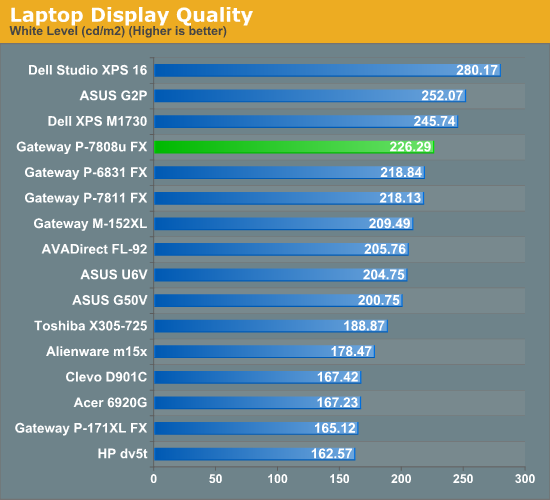
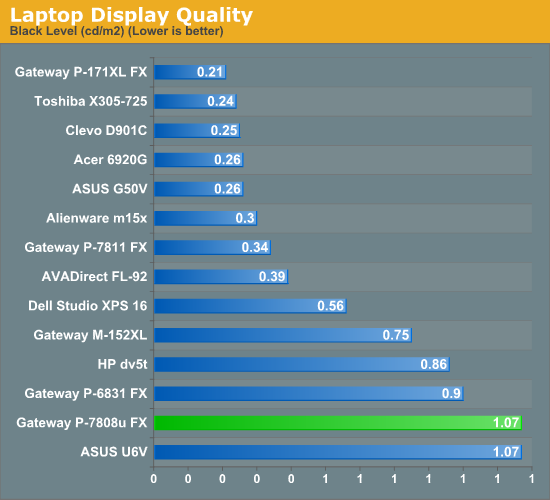
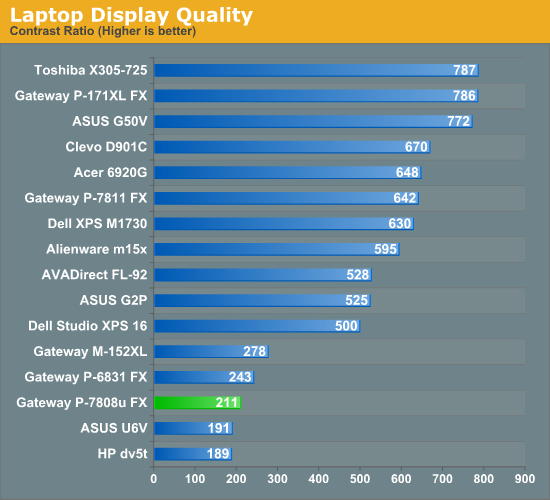
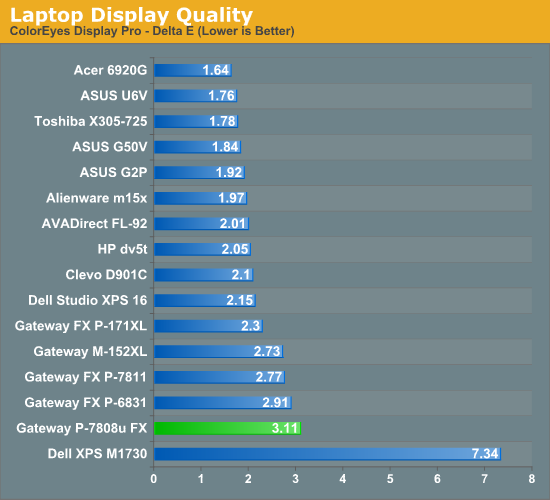
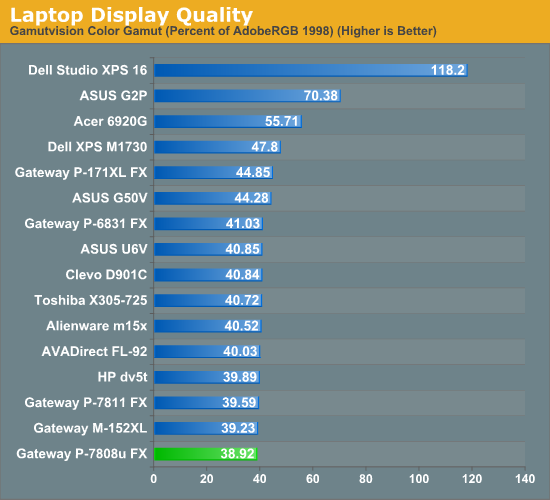
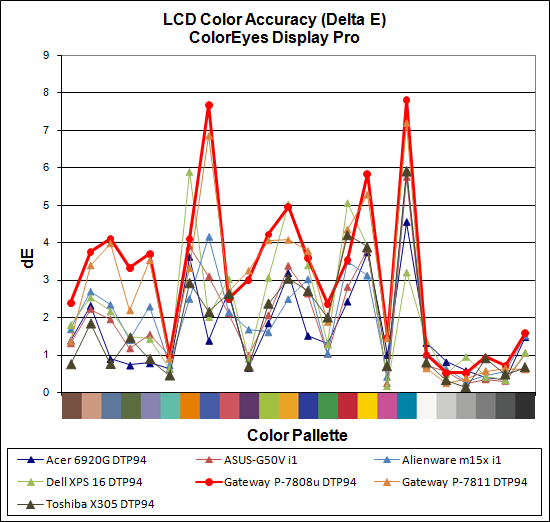
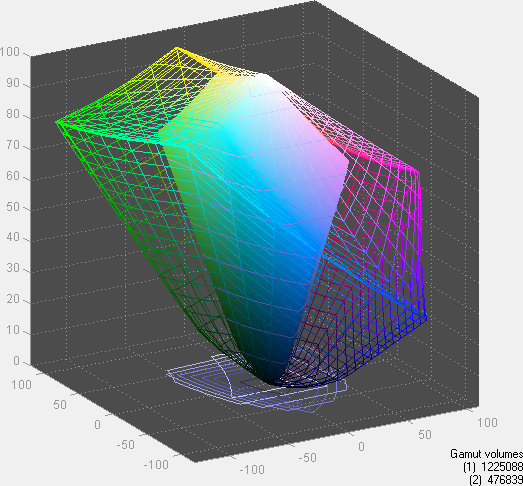
As we mentioned earlier, the change in LCDs from the P-7811 is definitely noticeable. We have no real problem with the 1440x900 resolution - certainly, some users will prefer that over a higher DPI 1920x1200 display. Unfortunately, the contrast ratio is horrible, ranking near the bottom of the charts, and the same goes for color accuracy and color gamut. There is a huge, extremely noticeable difference between the 200:1 contrast ratio LCDs and those that can achieve closer to 500:1; anything more than that may not matter as much, but lower contrast ratios almost always mean very poor black/dark color reproduction. Most inexpensive laptops will have a similar quality display, but for a $1700+ notebook we expect more. Again, Gateway either needs to bring back the WUXGA display, or they need to find a substantially better WXGA+ offering.










16 Comments
View All Comments
andrezunido - Monday, April 13, 2009 - link
Battery/Technology isn't there yet for "affordable" pc gaming on the move. Is it possible that these lower quality screens have substancial power savings when compared to screens like the Dell's XPS 16, or are they just to save on the moneys?It's nice to see the Apple laptops in the battery charts but since these are almost "consoles" (OS and hardware fine tunned for each other - I think Apple compiles the OS with special optimizations for its hand picked hardware), can they really be compared?
crimson117 - Monday, April 13, 2009 - link
Sure they can be compared... hardware manufacturers are allowed to work with MS for driver and OS optimization to make their parts work well with Windows, if they want to.andrezunido - Monday, April 13, 2009 - link
...they should have to! Buggy drivers are responsible for lots of power leaks in idle hardware (low power consumption modes in some drivers are non existent). One of the main reasons for this lack of optimization is the big market for PC's and competition between hardware manufacturers to get the hardware out without proper testing, or drivers that don't support proper power saving optimizations. Of course some of this can be blamed on the "generic" nature of the OS (running on various permutations of hardware), making the testing of hardware/software difficult.The Mac OS has the drivers for its limited hardware configurations partially written by the OS maker allowing the fine-tune of the OS for each computer hardware installation.
Like Anand said in a article, its a model/year thing just like a car. The optimization and integration of hardware and software is a well thought thing in a Mac.
In a generic PC the only way that i know of accomplishing this battery efficiency is by building your own Linux installation (i.e. using Gentoo) and tinker with the kernel, drivers and settings to achieve a power efficient installation (see: http://www.lesswatts.org/)">http://www.lesswatts.org/).
Wrapping it up: It can be compared, but... one has to be mindful of what is what.
andrezunido - Monday, April 13, 2009 - link
Sorry for the bad link, if anyone is interested in getting a bit more power efficient on Linux, http://www.lesswatts.org/">http://www.lesswatts.org/ has some nice software and information.Anyway, the P-7808u seems like a very capable machine for its price. Too bad about the screen quality, being the first thing I consider on a Laptop (Second is Battery), I find it too bad that it was "downgraded" when everything else seemed to be bumped up (even the price unfortunately).
I guess the battery would have to be a expensive monster to feed this kind of performance machine with a decent autonomy. But the screen would have added a lot a value with "potentially" less investment from the manufacturer.
djc208 - Monday, April 13, 2009 - link
I had figured one of these would be top contender for my next laptop but I'm not impressed with this "update". The worst part is that there really isn't a lot of competition for this notebook, even at smaller chassis sizes.I'll just have to hope Gateway or some other company will fill this niche properly by the time I'm ready to buy later this summer.
Thanks for the honest review, hopefully someone at Gateway is listening.
djc208 - Monday, April 13, 2009 - link
I had figured one of these would be top contender for my next laptop but I'm not impressed with this "update". The worst part is that there really isn't a lot of competition for this notebook, even at smaller chassis sizes.I'll just have to hope Gateway or some other company will fill this niche properly by the time I'm ready to buy later this summer.
Thanks for the honest review, hopefully someone at Gateway is listening.